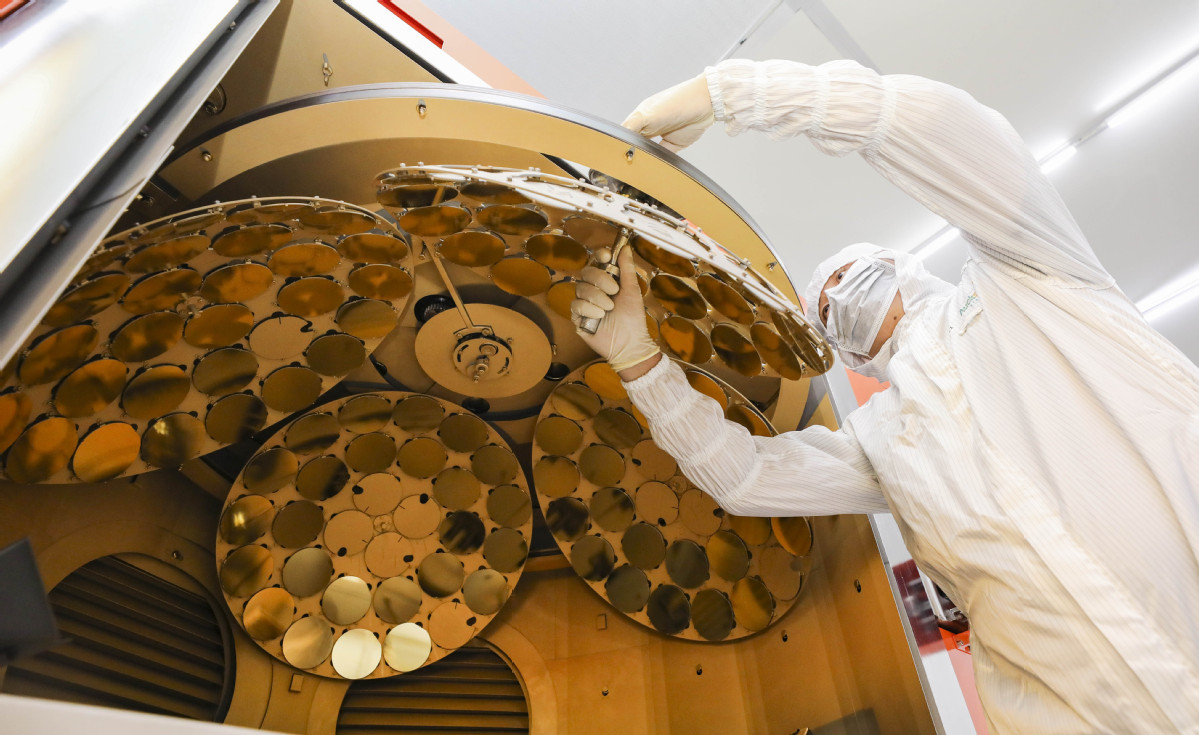
Microchips are produced at a factory in Huai'an, Jiangsu province. ZHAO QIRUI/FOR CHINA DAILY
China's overall research and development expenditure maintained double-digit growth in 2022 for the seventh consecutive year since the 13th Five-Year Plan (2016-20), with the total inputs growing by 10.4 percent from the year before to reach 3 trillion yuan ($443.98 billion) for the first time, and the ratio of R&D expenditure to GDP rising to 2.55 percent, according to National Bureau of Statistics data.
As the world's second-largest R&D funding investor, China has maintained its double-digit growth for seven consecutive years despite facing great economic downward pressure. This has effectively promoted the in-depth implementation of its innovation-driven development strategy.
Over the past decade, China has adopted a series of major policies and measures to drive innovation and development through reform, and stepped up efforts to encourage private funds to invest in R&D activities through preferential tax policies, contributing to the development of its scientific and technological undertakings and innovation-driven development.
Basic research is the source of a country's whole scientific system and plays an important role in promoting its breakthrough in frontier technology. Experiences from other countries show that increasing investment in basic research helps enhance original innovation ability, cultivating world-class leading talents.
China's spending in basic research has been continuously increasing, reaching 195.1 billion yuan in 2022, up 7.4 percent over the previous year and accounting for 6.32 percent of its total R&D expenditures.
However, China's R&D inputs still have space to improve in scale, structure and efficiency, and some long-standing problems need to be solved. China should accelerate the implementation of adopted scientific and technological development policies, improve a diversified investment mechanism, and promote the effective allocation of innovation resources through market means, to form a strong force to promote scientific and technological innovation and lay a solid foundation for achieving high-level scientific and technological self-reliance.


